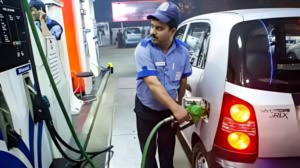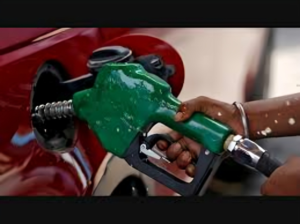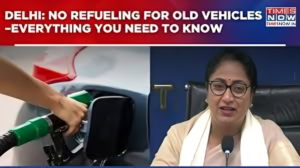Delhi’s New Fuel Restrictions: What You Need to Know
Introduction
Delhi’s transport landscape is undergoing a significant transformation as the city administration has announced that 6.2 million vehicles will no longer receive petrol or diesel refills from today. This policy aims to tackle the severe air pollution crisis plaguing the National Capital Region, but it also raises urgent questions about mobility, convenience and equity for millions of residents. In this article, we delve into the rationale behind this move, its immediate implications for vehicle owners, real‑world examples of similar measures in other global cities and practical alternatives for commuters.

The Why Behind the Decision
Air quality in Delhi has consistently ranked among the worst in the world. The administration cites rising particulate matter (PM2.5) levels and the health risks posed by vehicular emissions. Key reasons for the restriction include:
- Public Health Concerns: Extended exposure to high pollution levels increases respiratory and cardiovascular diseases.
- Environmental Goals: Aligning with national targets to reduce carbon emissions and promote cleaner transport.
- Regulatory Precedent: Following global trends where cities like Paris and Madrid have imposed fuel limits during pollution emergencies.
Immediate Impact on Vehicle Owners
For the 6.2 million vehicles affected—primarily older models failing to meet recent emission norms—the ban creates a sudden mobility challenge. Drivers will experience:
- Fuel Rationing: Only vehicles registered under the latest Bharat Stage emission standards can refuel freely.
- Higher Operational Costs: Many may switch to prepaid or subsidized public transport tickets.
- Compliance Pressure: Owners of non‑compliant vehicles must either upgrade engines or purchase newer, eco‑friendly models.
Real‑Life Examples of Urban Fuel Restrictions
A handful of global metropolises have implemented similar policies with mixed results:
- Paris, France: During severe smog days, odd‑even licence plate rules restricted half the cars from city roads. While pollution dipped temporarily, public backlash grew over convenience trade‑offs.
- Beijing, China: Annual vehicle quotas and green‑plated electric vehicles gained priority, leading to a surge in EV adoption, though many resorted to neighbouring cities for cheaper fossil fuel.
- Mexico City, Mexico: “Hoy No Circula” program prohibits certain vehicles from driving one weekday each week, complemented by robust public transit options to ease commuter burden.
Navigating the New Normal
Commuters facing the ban can explore several alternatives to maintain daily routines:
- Public Transport Upgrade
- Metro extensions and additional bus fleets have been rolled out in recent months.
- Monthly travel cards or season passes can offer cost savings of 30–40%.
- Carpooling and Ride‑Sharing
- Official carpool lanes have been introduced on major corridors.
- App‑based services are offering discounted pooled rides for first‑time users.
- Electric Two‑Wheelers and Rickshaws
- Several manufacturers are providing subsidized electric scooters with quick‑charge options.
- E‑rickshaws now operate on dedicated lanes in Old Delhi, improving last‑mile connectivity.
- Cycling and Micromobility
- Public bike‑sharing kiosks have expanded to 200+ locations.
- Dedicated cycling tracks are being constructed along the Ring Road.

Economic and Social Considerations
While environmental benefits are clear, the policy also impacts different social groups unevenly:
- Lower‑Income Families: Reliant on older, budget vehicles; may struggle to bear upgrade costs.
- Ride‑Hailing Drivers: Face temporary income loss until they transition to compliant vehicles or EVs.
- Small Businesses: Delivery and logistics firms must recalibrate routes or invest in greener fleets.
To address equity concerns, the government has introduced:
- Subsidy Schemes: Grants up to ₹20,000 to retrofit compatible emission‑control devices.
- Low‑Interest Loans: For purchase of new, fuel‑efficient two‑wheelers and small cars.
- Training Programs: Workshops on vehicle maintenance to improve fuel efficiency and reduce emissions.
Looking Ahead: A Sustainable Vision
The immediate restriction is a stepping‑stone towards a broader vision of sustainable urban mobility in Delhi:
- Infrastructure Expansion: Plans for 1,000 km of additional metro track by 2030.
- Electric Vehicle Ecosystem: Setting up 5,000 charging stations across the city by next year.
- Smart Traffic Management: AI‑driven signal systems to smooth traffic flow and cut idle emissions.
By combining regulatory measures with robust alternatives, Delhi aims to balance environmental health with commuter convenience.
Conclusion
Delhi’s decision to halt petrol and diesel refills for 6.2 million vehicles marks a bold step in the fight against air pollution. While the policy poses immediate challenges for vehicle owners, it also accelerates the shift towards cleaner transport modes. Through strategic subsidies, expanded public transit and innovative mobility solutions, the city can pave the way for a healthier, more sustainable future. Stakeholders—from ordinary commuters to policymakers—must collaborate closely to ensure that the transition is both effective and equitable.
